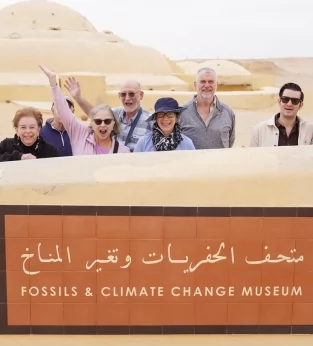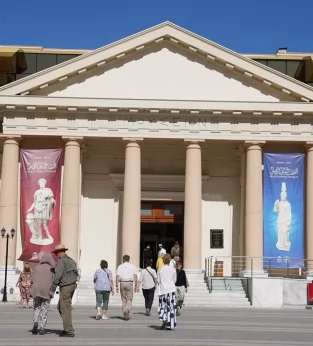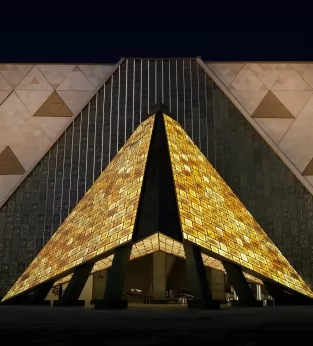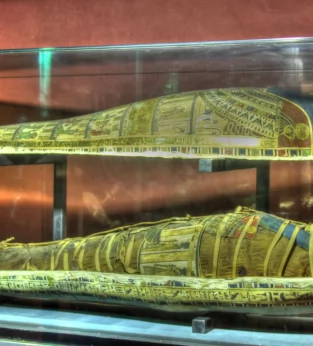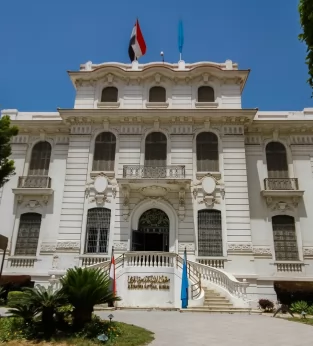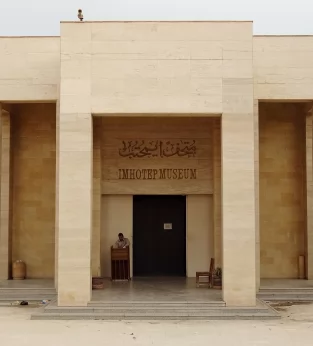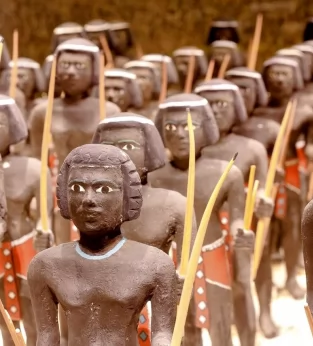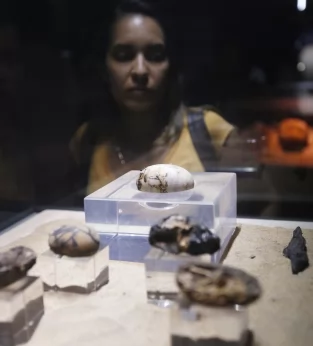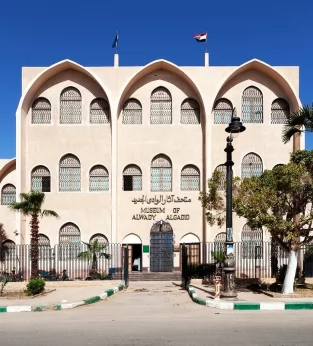Stay updated!
The National Museum of Egyptian Civilization (NMEC), in Fustat, Cairo is one of the most important modern museums in Egypt. Unlike other museums that focus mainly on Pharaonic treasures, the museum of Egyptian civilization is the first museum in the Arab world to present the entire history of Egyptian civilization - from prehistoric times through the Pharaonic, Greco-Roman, Coptic, and Islamic eras, all the way to modern Egypt.
What Makes the NMEC Unique
Unlike the Egyptian Museum in Tahrir, which focuses mainly on ancient artifacts, or the Grand Egyptian Museum in Giza, dedicated to Tutankhamun and the pyramids, the NMEC offers a comprehensive story of Egypt’s evolution. Its exhibitions combine archaeology, art, and daily life across thousands of years, showing how Egypt’s identity has continuously transformed.
The Royal Mummies Hall
The National Egyptian Museum's most valuable artifact is the Royal Mummies Hall, home to 22 royal mummies of Egypt’s ancient kings and queens - including Ramses II, Seti I, and Queen Hatshepsut. After their grand transfer in the Pharaohs’ Golden Parade of 2021, the mummies were permanently relocated here. Visitors walk through a dimly lit, reverent space designed to evoke ancient tombs, creating a powerful and emotional connection to Egypt’s past.
Visitors can encounter the mummies of Seqenenre Taa II, Amenhotep I, Thutmose I, Thutmose II, Thutmose III, Thutmose IV, Amenhotep II, Amenhotep III, Seti I, Ramses II, Merenptah, Seti II, Siptah, Ramses III, Ramses IV, Ramses V, Ramses VI, Ramses IX, as well as the powerful queens Ahmose-Nefertari and Hatshepsut.
Besides Royal Mummies, the museum also preserves other priceless artifacts of Egyptian civilization, representing every era - from prehistoric tools and Pharaonic treasures to Greco-Roman sculptures, Coptic art, Islamic manuscripts, and modern heritage pieces. It features thematic galleries that explore everyday life, crafts, traditions, and cultural practices across the ages, offering insight into how Egyptians lived through different eras.
Visit the NMEC with Inside Egypt
Our Egypt tours include visits to the National Museum of Egyptian Civilization and other world-class museums, providing travelers with a deeper understanding of Egypt’s timeless journey - from the Pharaohs to the present day.
This makes NMEC not only a museum but also a gateway to understanding Egypt’s timeless story.
See this incredible museum and more like it on our Egypt tour. Book your luxury Egypt vacations!
Photos of the Museum of Egyptian Civilization
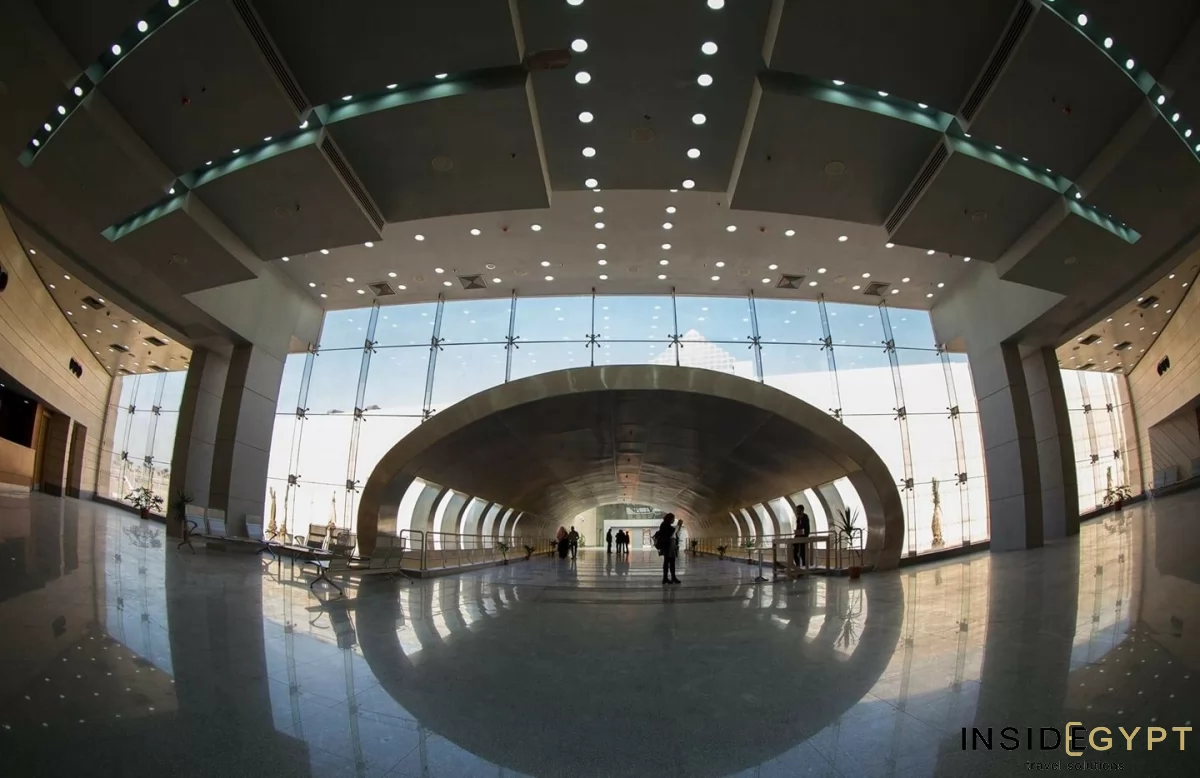
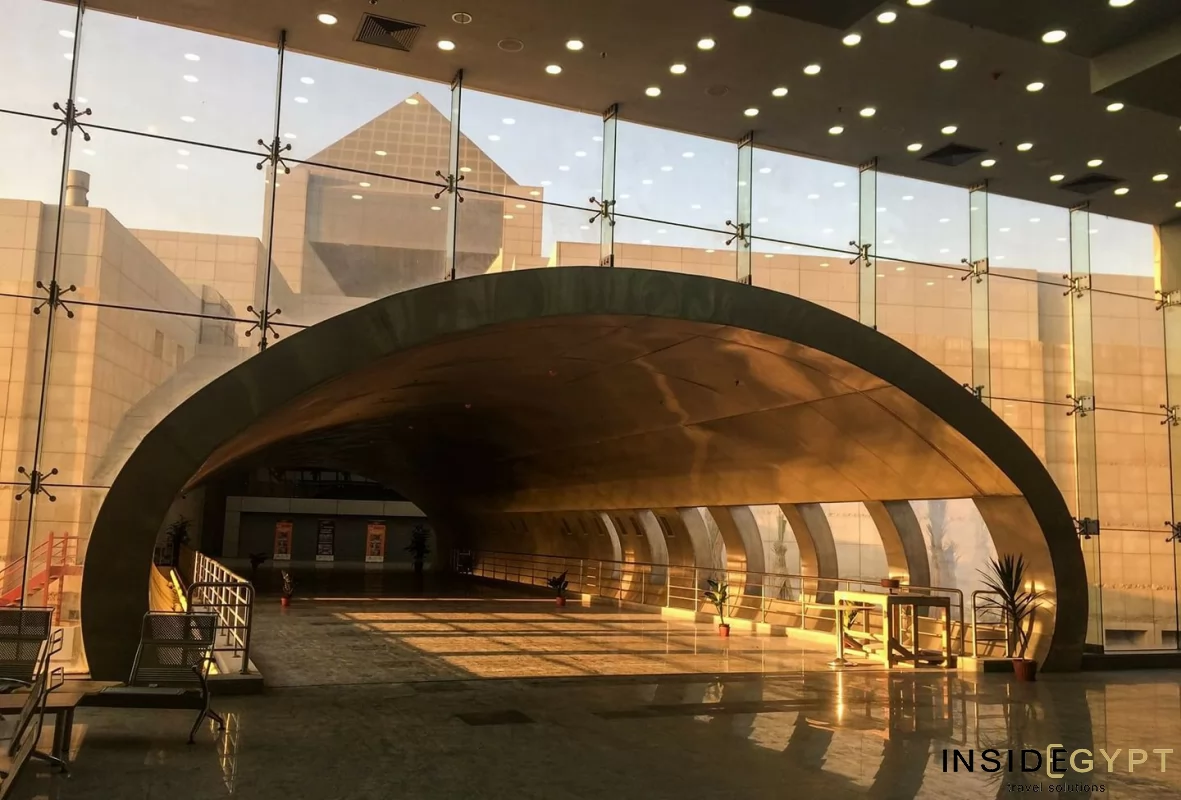
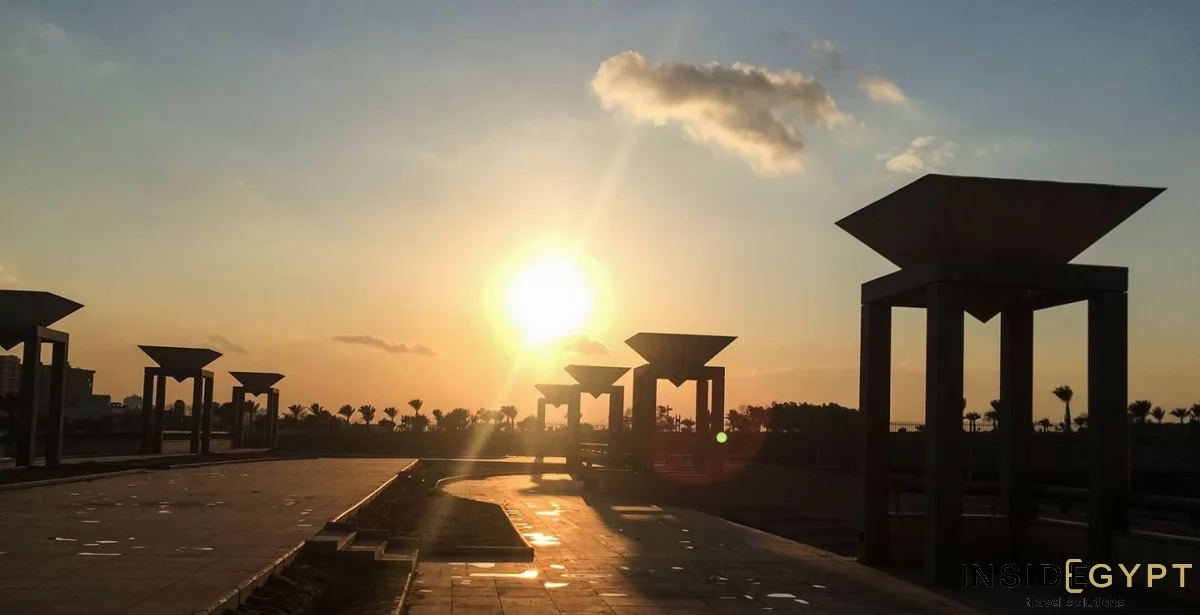
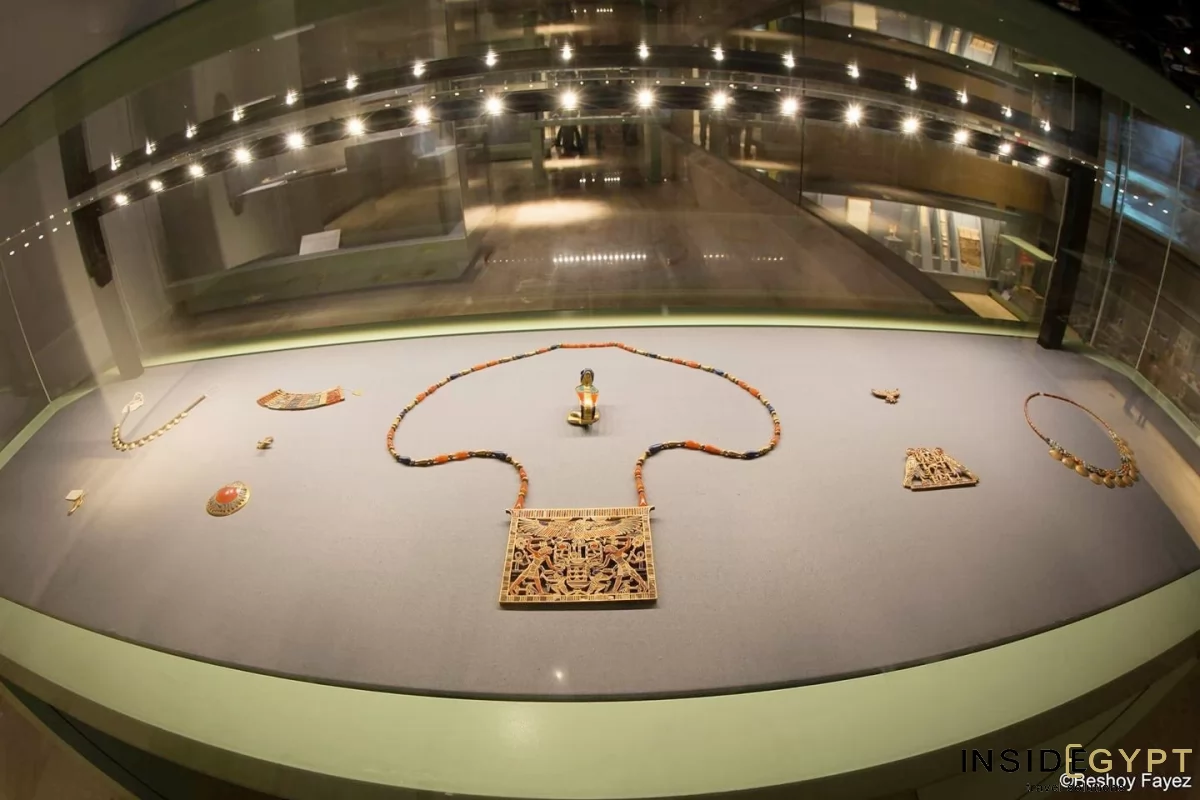
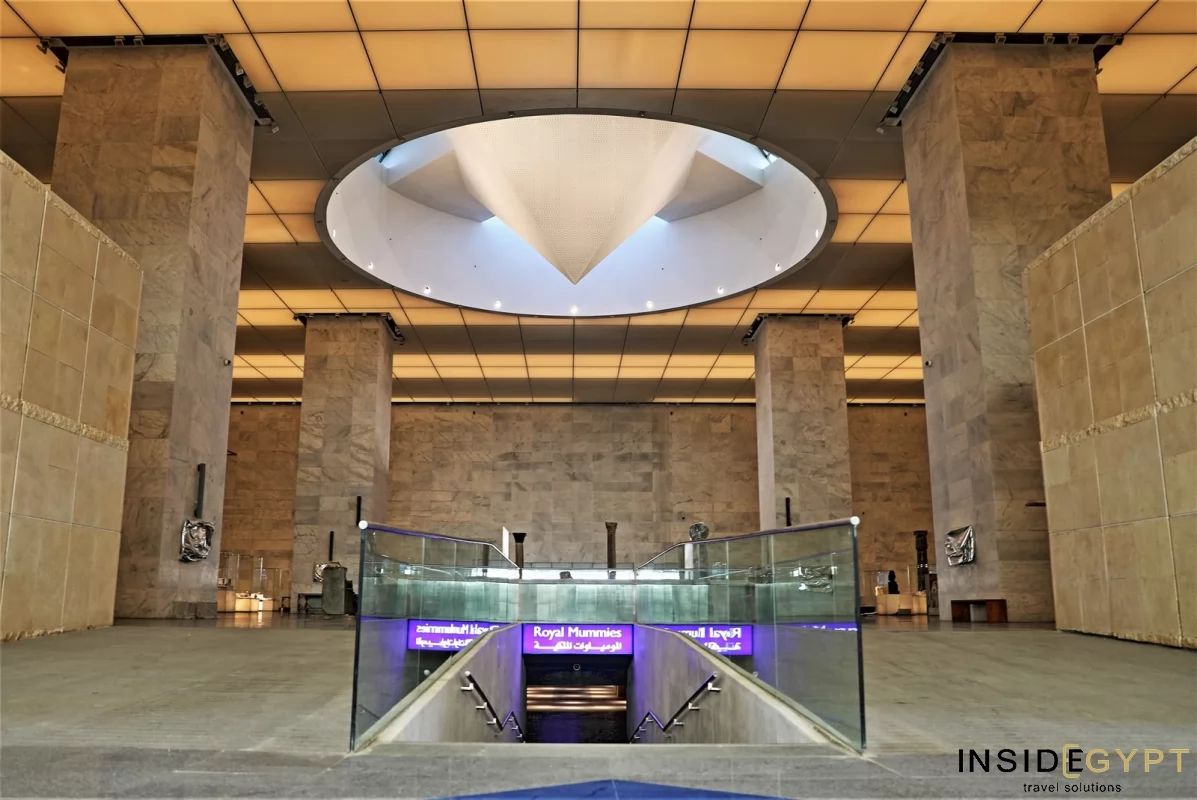
Discover Our Exclusive Egypt Tours
Tour Reviews
FAQs About the National Egyptian Civilization Museum
Where is the Museum of Egyptian Civilization located?
The National Museum of Egyptian Civilization (NMEC) sits in Fustat, Old Cairo, overlooking the scenic Ain El-Sira Lake. Just a short drive from downtown Cairo, the museum is easily accessible and lies close to other major attractions such as Coptic Cairo, the Amr Ibn Al-As Mosque, and the Citadel.
Fustat was chosen as the site because it was the first Islamic capital of Egypt, making it a place of immense historical value. By situating the NMEC here, Egypt connected its modern cultural landmark with a location that has witnessed centuries of its history.
This setting emphasizes the museum’s mission to showcase Egypt’s full heritage - from prehistoric times through the Pharaonic, Greco-Roman, Coptic, Islamic, and modern eras - while also placing it in the heart of one of Cairo’s most historically rich districts.
What is the history of the NMEC?
The history of the NMEC dates back to early plans in the 1980s to create a museum that would showcase the full span of Egypt’s heritage. Construction progressed in phases, and the museum officially opened to the public in 2017. Unlike traditional museums, the NMEC was envisioned as a comprehensive cultural institution, highlighting Egypt’s continuity from prehistoric times to the present day.
The museum gained worldwide attention in April 2021 during the spectacular “Pharaohs’ Golden Parade.” In this historic event, 22 royal mummies, including those of Ramses II, Seti I, and Hatshepsut, were transferred with great ceremony from the Egyptian Museum in Tahrir Square to their new permanent home at the NMEC.
Since then, the museum has become an international symbol of Egypt’s cultural identity. Its mission goes beyond preserving artifacts, aiming to educate, inspire, and connect visitors with thousands of years of Egyptian civilization.
How can I visit the Museum of Egyptian Civilization?
Visiting the National Museum of Egyptian Civilization is simple and convenient thanks to its central location in Fustat, Old Cairo. The museum is easily accessible by car or taxi, and it is only a short drive from downtown Cairo and popular attractions like Coptic Cairo and the Citadel. Public transportation options are limited, so most visitors prefer private transfers or organized tours for comfort and efficiency.
Inside Egypt provides curated visits that include round-trip transport, professional Egyptologists, and pre-arranged entry tickets - ensuring you avoid long lines and get the most out of your time.
During your visit, you can admire the stunning galleries and take in the National Museum of Egyptian Civilization photos that capture its architecture and remarkable collections. This makes your journey not just educational, but also a memorable cultural highlight of any Cairo itinerary.
How much does a ticket cost for the Egyptian Civilization Museum?
The cost of National Museum of Egyptian civilization tickets is straightforward and includes access to all galleries, including the Royal Mummies Hall. For international visitors, the Egyptian Museum ticket price in 2025 is 550 EGP for adults and 300 EGP for students. Egyptian citizens pay a reduced rate of 80 EGP for adults and 40 EGP for students.
There is no need to purchase a separate ticket for the Royal Mummies Hall, as entry is included in the main admission. This makes the NMEC excellent value for anyone wishing to explore thousands of years of Egyptian heritage in one place.
To make the process even easier, Inside Egypt includes all ticketing in its luxury tour packages. With transport, expert guides, and pre-arranged entry, you can enjoy the museum without waiting in line or worrying about additional costs.
Discover Our Exclusive Egypt Tours
Inside Egypt offers a range of carefully designed tours, from short cultural highlights to extended journeys combining history, culture, adventure, and relaxation.
Egypt Total Solar Eclipse Tour 2027 (7 days) – Once-in-a-lifetime eclipse in Luxor + Egypt’s highlights.
8-Day Egypt Tour – Classic Egypt in one week with a Nile cruise.
10-Day Tour of Egypt – Deeper exploration with Cairo, Luxor, Aswan & cruise.
12-Day Tour - luxury Dahabiya Nile cruise.
Around Egypt in 14 Days – Slow-paced journey with extended Nile cruise.
Egypt & Siwa Oasis Tour (15 days) – History, culture & adventure to Egypt’s desert oasis.
Long Nile Cruise from Cairo to Aswan (17 days) – Epic Nile journey with rare archaeological stops.
Whichever tour you choose, Inside Egypt ensures exclusive experiences, expert guides, and unforgettable memories.
What People Say About Visiting the Museum of National Civilization
Visitors from around the world praise the National Museum of Egyptian Civilization for its unique collections and unforgettable atmosphere.
“I was blown away by the depth and quality of the exhibits at the NMEC. The highlight for me was standing just a few feet away from the mummies of Ramses II and Hatshepsut - it felt surreal. The layout is modern, easy to navigate, and far less crowded than other museums in Cairo. I left with a much deeper appreciation for Egypt’s full history, not just the pharaohs.” Sarah Johnson from the USA
“As a history enthusiast, the National Museum of Egyptian Civilization exceeded my expectations. It was fascinating to see collections spanning from prehistory to modern times, all under one roof. The Royal Mummies Hall was extraordinary and presented with great respect. The setting in Fustat, overlooking Ain El-Sira Lake, adds to the atmosphere and makes the visit even more memorable.” David Williams from the UK
“Visiting the NMEC was the highlight of my trip to Egypt. Unlike the Egyptian Museum in Tahrir, this space is well organized and very informative, with displays covering all eras of Egyptian culture. The mummies were impressive, but I also loved the sections on everyday life and crafts. The museum staff were friendly and knowledgeable, which made the experience even better.” Emily Brown from Australia
In summary, travelers consistently describe the NMEC as a world-class museum that brings Egypt’s entire civilization vividly to life.
